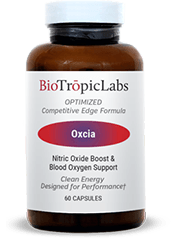
Bad fueling can ruin a good workout
Feeling under-fueled if you don’t eat before a workout…
Feeling nauseous if you do…
It’s frustrating when your workout goes sideways because of a fueling problem! Especially when it’s already hard to set aside the time in your busy day for those sessions.
Is fueling effectively for workouts at non-ideal times an issue for you? Here are some suggestions to make sure you can show up ready every time.
Fueling is a balancing act
On the face of it, fueling should be pretty simple: Eat the right fuel, in the right quantity, at the right time. Do that, and you should arrive at your workout with an empty and happy belly, and a decent amount of liver glycogen.
Liver glycogen feeds your glucose-hungry brain and muscles during exercise. After a long night of sleeping, you only have enough of it for a short, easy session before you could bonk. To perform well in a long (60+ min) or intense workout, you’ll need to eat something first. But a full belly can make you feel nauseous if most of your blood flow is shunted away from your gut to your working muscles.
It all comes down to balancing your need for fuel with the need to keep your stomach (mostly) empty. The simplest solution is to time every workout 2-3 hours after a regular meal. This gives you the calories you need as well as the time to digest them.
But most of us don’t have the luxury of timing our meals and workouts like that. We have to fit our workouts around work and family obligations. Typically this means morning workouts started shortly after waking, and midday or evening sessions that start 4+ hours after a meal.
The solution is to find a 100-200 calorie snack you can eat 30-60 minutes before a workout that you can tolerate and that is practical to keep on-hand.
The right fuel, in the right quantity, at the right time
If you have a strong stomach, you might be able to eat just about anything successfully. Others find they have to experiment to find the content, quantity and timing of this pre-workout snack that works for them.
If you have a sensitive digestive system, start with foods that are inherently easy to digest. Avoid spicy, fatty, high-fiber foods, and rely instead on complex carbs that are relatively low in fiber. Foods high in protein, fat and fiber spend more time in your stomach, and are more likely to cause stomach upset. While they may seem less healthy, carbohydrate-rich foods are easy to digest and contain a lot of glucose that your active body will use right away.
The size of a pre-workout snack should generally be in the 100-200 calorie range. You will need to experiment for yourself to see what size you can tolerate. Make sure to read product labels, as you may be underestimating the calorie content of foods. Tortillas and bananas can range from 60-250 calories each, depending on size, and bagels are notoriously higher in calories than people expect.
As for timing, 15-60 minutes before starting will work for these smaller snacks. If you have an intense workout planned, aim closer to 60 minutes. If you have a long workout planned, make sure you fuel during your workout as well.
Some ideas for pre-workout snacks:
- Toast/tortilla/banana/sweet potato smeared with a little nut butter of your choice
- Energy gel or sports drink (not a high-protein recovery drink)
- KIND bar
- Sticky rice ball containing fruit, chocolate chips or eggs, as in Feed Zone Portables
- Small bowl of low-fiber, low-sugar cereal like Cheerios, Rice Krispies, or Corn Flakes
Once you’ve found a few options that work for you, keep them in your pantry at home and in your desk at work so they’re always ready when you need them.
How to do it
Scenario 1: You’re 20 minutes through your post-work spin session. You can taste the cold pizza you had an hour ago, and your unhappy gut forces you to cut the session short.
What to do next time: Eat a good breakfast, but make sure you’re done with it 3 hours before swim practice. Try eating a carb-heavy 100 calorie snack (not spicy, cheesy pizza) at your desk about an hour before practice begins.
Scenario 2: You hit the road for your Saturday morning long run right after rolling out of bed without eating anything, and your legs feel like lead. You’d planned to add some half-marathon pace intervals to the workout, but decide you’d better stick to an easy run.
What to do next time: Move your dinner later in the evening the night before. Get up for a light breakfast 2 hours before run time and then go back to bed OR find a light carb-heavy snack you can tolerate when you first wake up. Consider fueling during your workout with gels or sports drink.
It’s frustrating to have to bail on a workout because the body you brought to it wasn’t ready to perform. You shouldn’t have to miss a workout because of bad fueling. With a short list of go-to pre-workout snacks that you always keep on hand, you’ll be much less likely to miss a key session.
(Photo by Volodymyr Hryshchenko on Unsplash)
